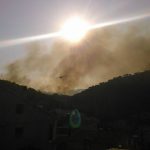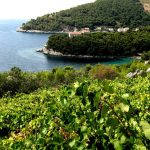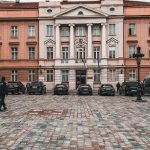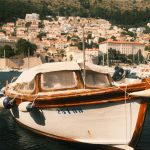May 10, 2023 – Azerbaijan, a country on the border of Europe and Asia, could become a gas exporter to Croatia in the coming years, as Croatia is considering connecting to the gas pipeline there.
The morning fog hangs over the Caspian Lake, which some consider a sea because of its size and brackish water. At a distance of 70 kilometers lies the Shah Deniz gas field, with an area as large as the two largest Croatian islands, Cres and Krk, combined, as Poslovni writes.
Six oil companies extract gas from a depth of 600 meters, then press it into pipes that stretch to neighboring Georgia. From there, they go through Turkey and Greece to Albania. One branch then enters Italy, while the construction of the other, which would go through Montenegro and Bosnia and Herzegovina to Croatia, is being considered.
“Croatia supports this project. We believe it is important to have another additional supply route where the gas from Azerbaijan would reach Split, where our gas pipeline network goes,” Croatian Economy Minister Davor Filipović recently said for Hina.
He and Prime Minister Andrej Plenković discussed this project in January with Azerbaijani President Ilham Aliyev at a forum in Davos, Switzerland.
“At that time, we talked with the representatives of Montenegro; we continued to talk with our friends in Bosnia and Herzegovina. There is a lot of interest in that direction, so I believe we will eventually do that project,” adds Filipović.
The project, known as the Adriatic-Ionian pipeline, has been under consideration since 2012 when the Croatian natural gas transport company Plinacro and the Ministry of Economy began participating in meetings of interested countries. However, implementation was not started at that time because gas from Russia was cheaper, and the amount of gas from Azerbaijan was limited.
Everything changed five months after Russia invaded Ukraine.
The EU, which until then imported 40 percent of its gas from Russia, turned to liquefied gas from the USA, Norway, Algeria, and Azerbaijan.
Five hundred kilometers of gas pipeline to Split
The President of the European Commission, Ursula Von der Leyen, signed a strategic partnership agreement with President Aliyev in July.
“More than 10 European countries are asking us to increase deliveries,” Aliyev said at the political Global Baku Forum. The country of the former Soviet Union exported a total of 19 billion cubic meters of gas in 2019 and plans to deliver 24 billion this year.
“Half of that will be exported to Europe,” said Alijev, who visited Sarajevo last month.
Azerbaijani Energy Minister Parviz Šabazov Ogtaj says their goal is not only to increase the volume of existing partners “but to add new partners, including those in the Western Balkans.”
The Adriatic-Ionian gas pipeline from the Albanian town of Fieri to Split would be 511 kilometers long.
With it, Croatia would get half of the total five billion cubic meters of gas per year, what would be its capacity, Plinacro reported on its website. He announced the completion of the project in 2025.
“It is difficult to talk about the time dynamics now because talks are still being held, but there is interest in all countries,” says Filipović.
Croatia would export the imported gas and part of that from the LNG terminal on Krk to EU countries because these quantities would exceed the domestic needs of Croatian households and industry.
Filipović notes that Croatia wants to position itself “as the energy hub of this part of Europe” and help other countries with supply.
Land of fire, oil, and gas
The Shah Deniz field in the Caspian Lake was discovered in 1999, and production began in 2006.
Toghrul Velijev, an analyst at the Baku Research Institute, believes that Azerbaijan can meet five to six percent of the EU’s gas needs from there. The European Commission reported last summer that Azerbaijan will deliver 20 billion cubic meters to the EU by 2027.
“That statement is too optimistic for both parties,” says Velijev, who believes that his country can export between 12 and 13 billion cubic meters to the EU.
At the same time, traffic jams are forming on roundabouts in Baku. The streets are full of cars because a liter of the cheapest gasoline costs 0.53 euros.
“Almost everything here was built with oil and gas money,” says taxi driver Orkhan as he passes between the opposites, blocks of concrete apartment buildings built during socialism and modern glass shopping malls.
On the postcards of Baku, there are three glass hotels with 30 floors, built in the shape of a flame.
“Azerbaijan, the land of fire” is a tourist advertisement from the jerseys of the football club Atletico Madrid in 2014, which played twice in the final of the Champions League.
Baku was one of the stadiums where the 2021 European Football Championship was played, and since 2017, Formula 1 races have been held on its streets.
Companies should increase their investments to continue the oil expansion, but some are restrained.
“For companies to be interested in investing in infrastructure and increasing exports, they need contracts for 20 to 25 years, not five years,” explains analyst Velijev.
He notes that the EU initiative on reducing the use of fossil fuels
of fuels, including natural gas, makes companies reluctant to invest in infrastructure.
Hydrogen – solution or promise?
Currently, the world is discussing the use of hydrogen, which would be produced from renewable energy sources and transported through adapted gas pipelines.
“Hydrogen can be a solution, but it is more of a promise,” says Dimitar Lilkov, an analyst at the Belgium-based Wilfred Martens Center for European Studies.
Hydrogen usage is currently below one percent worldwide.
“In the short term, it is not a solution, so in the coming years, the EU will still have to think about how to import natural gas and connect to various gas pipelines,” believes Lilkov, who spoke about it ten days ago at the economic forum in Delphi.
Hydrogen could also go to Croatia through the future pipes of the Adriatic-Ionian gas pipeline.
“Plinacro will ensure these pipes are ready for hydrogen when expanding our gas pipeline network. We also have to think about the future,” notes Filipović. “Everything we do now, we think about how to use it in the best possible way,” he adds.
Work on the depths of the vast Caspian Lake continues while passers-by stroll carelessly along its shores. The glass shopping center, in the shape of a blossoming flower, attracts the residents of Baku to shops like those found in Western Europe.
“There are more and more modern buildings like this,” says driver Orkhan. “And it will grow sky high and become more and more luxurious if oil and gas continue to be exported.”
For more, make sure to check out our dedicated News section.










